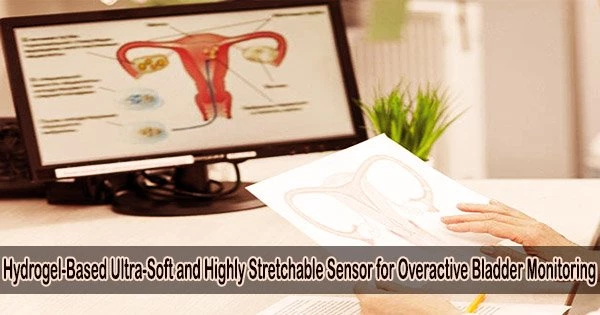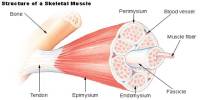Overactive bladder (OAB) is a condition characterized by a sudden and frequent urge to urinate. It may also involve urinary incontinence, which is the involuntary loss of urine. OAB can significantly impact a person’s quality of life and daily activities.
Our gut issues appear to have gotten worse as a result of modern living. Irritable bowel syndrome and overactive bladder syndrome are becoming more common in people who don’t show symptoms of recognized illnesses such infectious diseases but report having sudden symptoms.
Recently, a team of researchers from POSTECH and Korea Advanced Institute of Science and Technology (KAIST) has proposed a sensor to monitor overactive bladders.
The research team consisting of Professor Sung-Min Park and Young-Soo Lim at POSTECH’s Department of Convergence IT Engineering and Professor Steve Park and Byungkook Oh at KAIST’s Department of Materials Science has developed an ultra-soft and highly stretchable tissue-adhesive hydrogel-based multifunctional implantable sensor for monitoring overactive bladders.
The research findings were published in Biosensors and Bioelectronics.
Professor Steve ParkThe new sensor shows that sensors can be made small enough to be inserted by surgical-robot-assisted laparoscopic surgery. This has the potential to minimize the time taken for a patient to recover and reduce side effects.
Professor Steve Park
A constant urge to urinate is a symptom of overactive bladder syndrome, a medical disorder. Without any underlying illnesses, those who have the syndrome may even wake up during the night to urinate. Although the illness is not life threatening, it can interfere with the patients’ normal daily activities and lower their quality of life.
The standard of care for those with overactive bladder syndrome has been medication, which has occasionally been ineffectual. To minimize excessive bladder activity, a relatively recent treatment involves electrically stimulating the nerves that are connected to the bladder directly or indirectly.
The proper amount of stimulation for the nerves can be difficult to provide without closely observing bladder activity, thus this treatment is not without its difficulties. Overstimulation can lead to side effects or render the treatment ineffective.
As a result, the researchers concentrated on creating a monitoring system that could track bladder function in real time. They proposed that a complete electromechanical measurement was necessary to precisely track overactive bladder symptoms since the detrusor muscle is controlled by brain activity.
From that perspective, the team designed a USH-SI sensor that can monitor both mechanical (strain sensor to measure contraction and relaxation) and bioelectrical (EMG sensor to measure neural signal) activities of the bladder in one platform.
It was proved that the USH-SI sensor can measure in-vivo strain and EMG signals of the bladder, allowing monitoring of detrusor muscle movement and neuronal activity, in a test in which the team surgically inserted the sensor into an anesthetized pig.
In particular, the strong adhesiveness of the hydrogel (adhesive strength: 260.86 N/m) enabled firmer attachment onto the bladder compared to conventional silicone sensors. Sensor insertion can be performed using surgical-robot-assisted laparoscopic surgery.
“The new sensor shows that sensors can be made small enough to be inserted by surgical-robot-assisted laparoscopic surgery,” explained Professor Steve Park from KAIST. He added, “This has the potential to minimize the time taken for a patient to recover and reduce side effects.”
“We combined the USH-SI sensor with a neural stimulator targeted to treat overactive bladders, a chronic condition,” remarked Professor Sung-Min Park who led the study. He further explained, “This allows for monitoring and neural stimulation simultaneously. We expect it to be a platform that can be applied to other internal organs.”
The study was conducted with the support from the Nano Material Technology Development Program through the National Research Foundation of Korea.
















